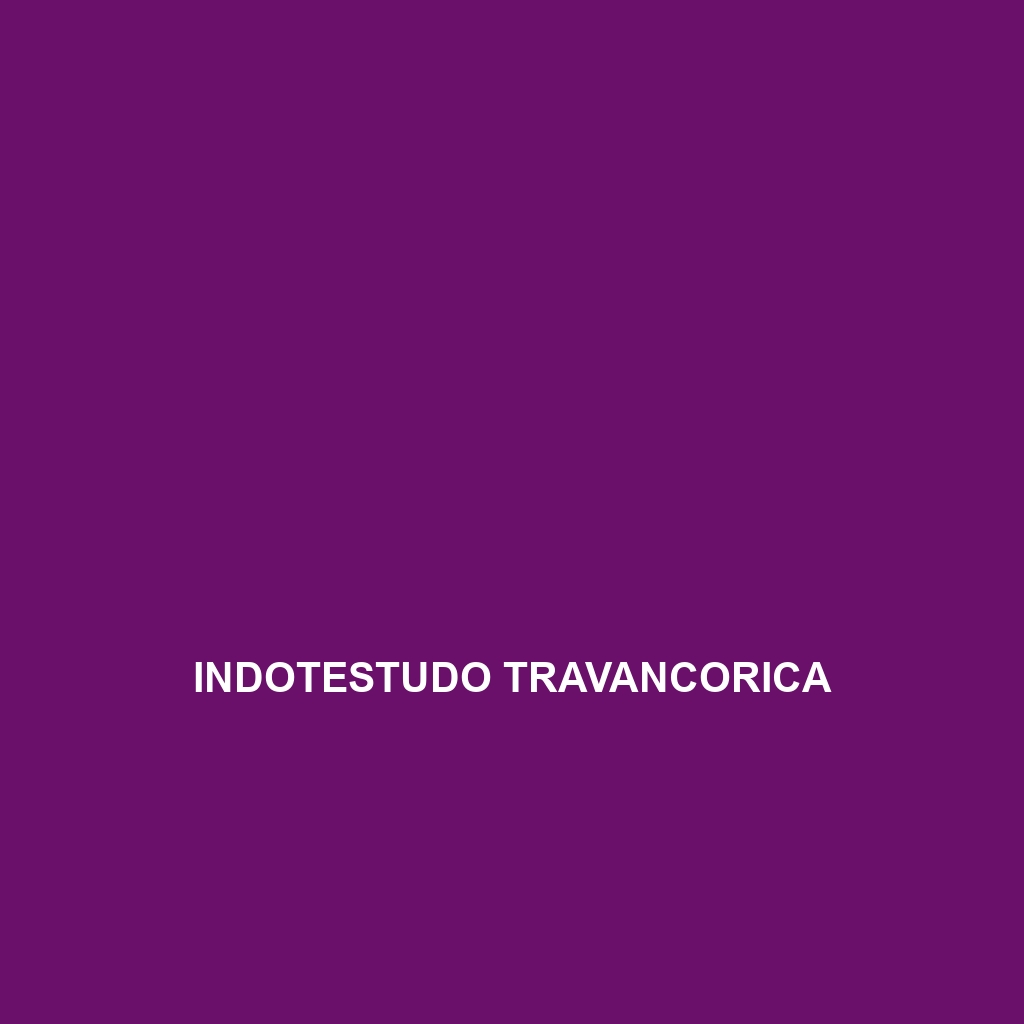Common Name
Indotestudo travancorica
Scientific Name
Indotestudo travancorica
Habitat
Indotestudo travancorica, commonly known as the Travancore tortoise, primarily inhabits the lush and diverse rainforests of the Western Ghats in India. This species thrives in the humid, tropical climate that characterizes this region, typically found at elevations ranging from 100 to 2,300 meters. The tortoise can also be spotted in surrounding savannas and shrublands, which provide an essential balance of forest and open habitats. The Western Ghats are a UNESCO World Heritage Site and are rich in biodiversity, hosting a mix of evergreen and deciduous forests that supply various environmental conditions favorable for the Travancore tortoise, including ample moisture and diverse flora.
Physical Characteristics
Indotestudo travancorica has several distinct physical features that set it apart from other tortoise species. Typically, adults reach sizes ranging from 20 to 30 centimeters in carapace length. The shell is dome-shaped with a smooth texture, exhibiting a range of colors from dark brown to olive green, often adorned with pale yellow or cream markings. Unlike other tortoises, the Travancore tortoise has a relatively flat shell, enabling it to navigate easily through dense vegetation. The limbs are sturdy and adapted for digging, which assists in its burrowing behavior. Additionally, their skin color can range from grey to olive, contributing to their camouflage against the forest floor.
Behavior
The behavior of Indotestudo travancorica is marked by its predominantly terrestrial lifestyle. These tortoises are diurnal, being most active during the day when they forage for food. They exhibit solitary behavior, although occasional social interactions may occur, particularly during the mating season. Travancore tortoises are known for their secretive nature, often withdrawing into their shells or burrowing into the ground when threatened. Notably, they show rapid burrowing capabilities, allowing them to escape predators or harsh weather conditions. Their mating rituals often involve intricate courtship displays, with males engaging in head-bobbing and pushing behavior to attract females.
Diet
Indotestudo travancorica is classified as an herbivore, primarily feeding on a variety of plant materials. Its diet consists of leaves, fruits, and flowers found within its rainforest habitat. They show a particular preference for soft, tender vegetation, making them vital for the dispersal of seeds in the ecosystem. They are known to consume fruits like berries and can occasionally feed on decaying plant matter, which contributes to nutrient cycling within their environment. The tortoises’ ability to forage across various plant species helps maintain the health of the forest floor and supports the growth of new plants.
Reproduction
The reproductive cycle of Indotestudo travancorica involves seasonal mating behaviors, generally occurring during the monsoon months from June to September. After a courtship period where males display various behaviors, females will lay clutches of eggs, typically containing 2 to 6 eggs, buried in moist soil. The gestation period lasts approximately 60 to 90 days, after which hatchlings emerge. These tiny tortoises are vulnerable at birth and rely on camouflage and nesting burrows for protection. Maternal care is minimal beyond the laying of eggs, with hatchlings expected to fend for themselves shortly after emergence.
Conservation Status
Indotestudo travancorica is currently classified as vulnerable by the International Union for Conservation of Nature (IUCN). The primary threats to their population include habitat loss due to deforestation, agriculture, and urban development, along with poaching for the illegal pet trade. Efforts are being implemented to conserve their habitat, including the establishment of protected areas and awareness campaigns aimed at local communities. Despite these efforts, challenges persist as the demand for exotic pets and land development continues to encroach on their natural habitats.
Interesting Facts
One notable characteristic of Indotestudo travancorica is its ability to sense temperature changes in its environment, which aids in locating the optimal conditions for nesting. Additionally, this species is known for its relatively long lifespan, with some individuals living over 50 years in captivity. Despite their widespread habitat, they remain shrouded in mystery due to their elusive behaviors, making research on their ecological roles essential for their conservation. Interestingly, Travancore tortoises have shown adaptability to slight habitat modifications, which may aid their survival in the face of changing environmental conditions.
Role in Ecosystem
Indotestudo travancorica plays a crucial role as a seed disperser within its tropical rainforest ecosystem. As these tortoises consume various fruits and plants, they inadvertently facilitate the growth of new plants by spreading seeds through their waste. This process is vital for maintaining plant diversity and the overall health of the forest. Furthermore, their burrowing behavior helps aerate the soil, promoting healthy root systems and enhancing the nutrient cycle within their habitat. Such ecological interactions position the Travancore tortoise as an important species within the Western Ghats, contributing significantly to the delicate balance of its ecosystem.
